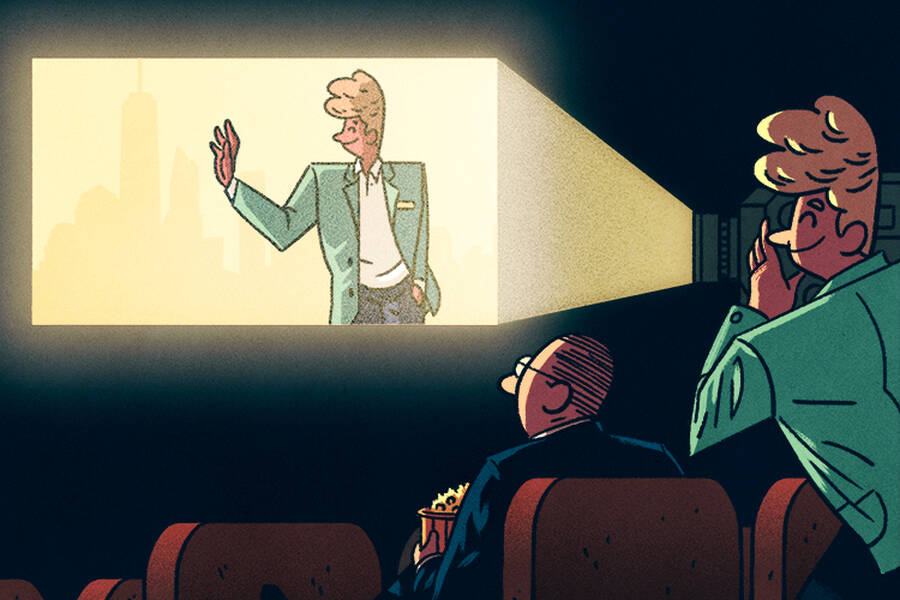Marketing Oct 30, 2018
How to Empower Customers to Tell Your Company’s Story
Their “experience with your product carries more weight than any marketing message you can come up with.”

Michael Meier
One of the most powerful sales tools that companies have are the stories people tell about their products and services. A good story can captivate potential customers and compel them to engage with their brand.
“A customer’s experience with your product carries more weight than any marketing message you can come up with,” says Esther Choy, president and chief story facilitator of Leadership Story Lab in Chicago and author of Let the Story Do the Work: The Art of Storytelling for Business Success.
But a lot of companies have a hard time convincing customers to share stories beyond a standard testimonial or review, Choy says. Furthermore, those testimonials may be of limited use for companies looking to learn how the product helped users overcome challenges—which is a key role that customer stories can play.
It takes a concerted effort to engage customers, gather that content, and deliver it effectively to other potential customers. Choy describes four things companies can do to curate those stories and deploy them for maximum effect.
Make Story Sourcing an Everyday Responsibility Across Your Company
Just as companies build social media departments around sharing their brand messaging, it is crucial that they also invest time and infrastructure to collect customer stories. The best way to do this is to design story sourcing into employees’ roles and responsibilities‚ such as tasking some employees with collecting, editing, and posting stories, as well as tracking how well they perform across media platforms.
“Make sure it’s baked into people’s jobs to collect stories,” she says. “Not just, ‘Oh, that’s a great idea.’ Because if nobody’s appointed to do it, it is unlikely to happen.”
Remember, the goal of these stories is to promote the company’s brand by associating it with positive, powerful narratives from the outside. Those outside voices provide an authenticity and trust lacking in testimonials and highly polished stories produced by the companies themselves. “What other customers say carries a lot of influence because I perceive them as my peers,” says Choy.
Capturing those outside perspectives can also help stimulate sales. On a recent flight, Choy sat next to an executive from a company that manufactures high-end sewing machines. The executive complained about how competition from cheaper, inferior products was endangering the company’s growth. The executive was having a hard time envisioning why customers would want to pay more for their high-end product. Choy saw the problem right away.
“I realized they had to go beyond the product,” Choy says. “They didn’t have anything that conveyed customer experience. With a story, you’re not just listening to why the company is the best, but why people deserve nothing but the best. And that message gets associated with your brand.”
Know What You Want to Capture
Encouraging customers to share their stories is one thing. Getting them to sit down and start typing can be more challenging.
“Oftentimes, there’s inertia,” says Choy. “There’s a lot of people happy with a product or service, but no news is good news, right? If you don’t hear from the customer, you’re doing a good job. But companies should source stories from customers because that is how they can defend and grow their market share.”
So the first step to gathering stories that dig deeper than product reviews is reducing that inertia. The goal for the company is to generate customer stories with three structural elements. Choy calls these “IRS”: an intriguing beginning or hook, a riveting middle, and a satisfying end.
“There’s a structural process to telling good stories, so design a structure for how you want your customer story to be put together and then make it easy for them.”
“There’s a structural process to telling good stories, so design a structure for how you want your customer story to be put together and then make it easy for them,” Choy says.
To do this, Choy recommends building a template of fill-in-the-blank prompts that customers can easily follow—and which will elicit particular types of stories—instead of just presenting them with an open text box. For example, In-Shape, a California-based health club group, asks three questions to help members develop their stories: “What was your goal?” “How did you get there?” and “How do you feel today?” Typical responses to these questions generally correspond to the beginning, middle, and end of stories. In another example, Conformis, a maker of knee replacements, asks its customers: “Is there something you can do with your Conformis knee that you weren’t able to before?” This prompt invites customers to use a before-and-after structure.
Provide Examples
Even customers who have great stories may not be the strongest writers, so providing examples they can study—and borrow from—can help solicit stellar stories.
“T.S. Eliot once wrote, ‘good writers borrow, great writers steal,’” Choy says. “That’s good advice.”
So companies should offer up samples of what they are hoping to solicit.
“You need to have a certain idea of what you’re looking for,” Choy says, “so that your customers know what you mean by ‘story.’”
Those samples should emulate what you’re looking for in terms of tone, length, and subject matter. So if you are interested in capturing irreverent stories of how customers used your product in unusual ways, or heroic tales of how they came to you in a crisis and you were able to help them succeed, have those kinds of examples to share with them.
For example, Vionic Shoes asks customers to share their “sole story” on its website. On the entry-form page, customers can read examples from others.
Reward Your Storytellers
Soliciting stories from your customers is essentially asking them to deepen their relationship to your brand. So, it only makes sense that they should walk away from that experience with some sort of instant gratification. After all, they took the time to tell their story. A little gratitude is not too much to ask for.
One option is to use lucrative rewards for storytellers. For example, at Vionic Shoes, every customer who submits a “sole story” receives 30 “Sole Circle Rewards” points, with an option to get more points by submitting a photo. At Absolute Steel, customers who submit stories that the company uses receive a $50 check in the mail.
But small rewards work, too, Choy says. Simply allowing customers to preview their stories prior to publication could be enough.
“If you let them take a look, they may go ‘wow, this is what it looks like on the website,’” she says. “You should have some sort of immediate feedback, some immediate gratification for having gone through the process of telling your story.



